Manufacturer, Supplier & Exporter of
a wide range of Dyes, Pigments & Food Colours
Solvent Dyes
Solvent dyes are a type of dye that is soluble in organic solvents. They are commonly used to add colour to a wide range of products, including solvents, waxes, and plastics. They can also be used in hydrocarbon fuels and lubricants, and there are some types of solvent dyes specifically designed for use in fuels. These dyes are insoluble in water and are commonly used in the coating and ink industries.
Solvent dyes dissolve easily in organic solvents and remain insoluble in water due to the non-polar or minimally polar nature of their molecules, which prevents ionization from occurring. These dyes are also known for their excellent light fastness, meaning that the colour obtained from them fades very slowly over time.
During the manufacturing process, no residues are left behind. Solvent dyes provide consistent and high-quality colouring when used with organic solvents, and they also offer excellent thermal resistance, which makes them highly resistant to corrosion.
Overall, solvent dyes are highly versatile and widely used in various industries, including the ink, coating, fuel, and lubricant industries. Their properties make them an excellent choice for colouring products that require long-lasting, vibrant colours with resistance to fading and thermal degradation.
To find the right Solvent dyes for polyester, we invite you to explore one of the best Solvent Dyes Manufacturers i.e. Megha International. We offer a diverse collection of best Solvent dyes for wool and consumables that cater to various requirements. Moreover, we keep pace with the advancements in digital textile printing techniques to ensure that our customers have access to the latest technologies. For detailed information on the product Download Solvent dyes PDF
Are you looking for Solvent Dyes? Transform your materials into vibrant masterpieces!
Buy High quality Solvent Dyes at Best Price - Megha International
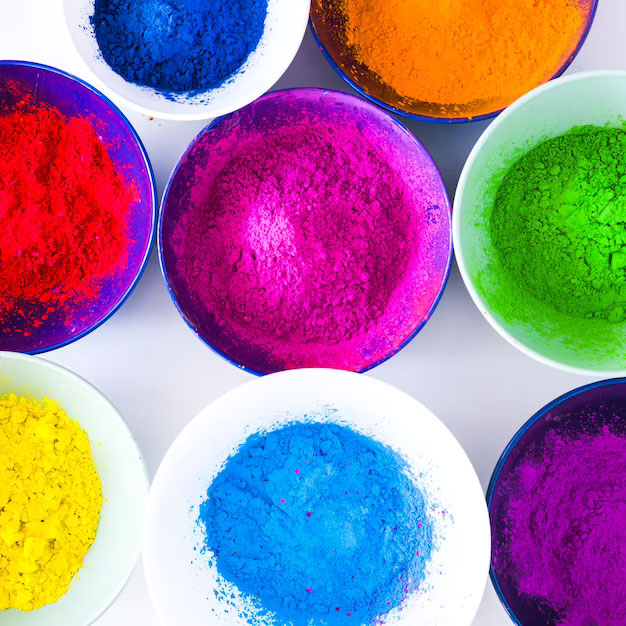
Solvent dyes Manufacturing Process
The manufacturing process of solvent dyes typically involves the following steps:
This involves synthesizing a precursor molecule that can be used to produce the final dye. The precursor is often a complex organic molecule that can be modified to produce a wide range of dyes with different properties.
The dye intermediate is then chemically modified to produce the final dye molecule. This process typically involves the use of chemical reactions such as esterification, amidation, and condensation.
The crude dye product obtained from the synthesis is then purified to remove impurities and unwanted by-products. This is typically achieved through a combination of techniques such as precipitation, filtration, and chromatography.
After coupling, the resulting dye is often purified using methods such as crystallization or chromatography to remove any impurities and ensure high purity.
The purified dye is then formulated into a suitable form for its intended use, such as a powder or liquid.
Finally, the finished product is subjected to rigorous quality control testing to ensure that it meets the necessary specifications and standards.
Types of Solvent dyes (solvent dyes shade card)
Some common Solvent dyes examples include:
| Solvent DYES | Solubility (GMS/LTR) | Resistance to Chemicals & Foodstuff*** | |||||||||||||||||||||||||||
| 5% | 1% | Product | C.I Name | CAS no | Light Fastness | Methyl Ethyl Ketone (MEK) | Methyl ISO-Butyl Ketone (MIBK) | Acetone | Ethyl Acetate | Diacetone Alcohol (DAA) | Butyl cellosolve | Ethyl cellosolve | Ethanol | Methoxy Propanol | Toluene | Caustic Soda | Acetic Acid | Lactic Acid | Butter / Margarine | Paraffin Wax | Soap | Water 80°C, 30 Min | Water Biol. 30 min | Coconut Oil | Cheese | Solvent DYES uses | Price | MSDS | TFDS |
| Yellow R | Yellow 82 | 85029-58-9 | (6-7) | 300 | 200 | 400 | 250 | 400 | 400 | 400 | 100 | 50 | 50 | 5 | 5 | 5 | 5 | (4-5) | 5 | 5 | 5 | 5 | 5 | Printing inks, paints, coatings, plastics, textile dyeing | |||||
| Yellow GL | Yellow 90 | 61116-26-5 | 7 | 20 | 10 | 450 | 10 | 400 | 400 | 400 | 50 | 250 | TR | 5 | 5 | 5 | 5 | (4-5) | 5 | 5 | 5 | 5 | 5 | Textile dyeing, printing inks, paints, plastics | |||||
| Golden Yellow | NA | 93050-80-7 | 6 | 350 | 270 | 400 | 250 | 400 | 400 | 400 | 100 | 50 | 30 | 5 | 5 | 5 | 4 | 4 | 5 | 5 | 5 | 5 | 5 | Textile dyeing, printing inks, paints, plastics, leather dyeing | |||||
| Orange RL | Orange 58 | 71775-93-4 | 6 | 400 | 100 | 400 | 100 | 400 | 400 | 400 | 200 | 450 | TR | 5 | 5 | 3 | 5 | (2-3) | 5 | 5 | 3 | 3 | 3 | Textile dyeing, printing inks, paints, plastics | |||||
| Orange R | Orange 99 | 110342-29-5 | 6 | 400 | 400 | 450 | 100 | 400 | 400 | 400 | 150 | 200 | TR | 5 | 5 | 4 | 4 | 4 | 3 | 3 | 5 | (4-5) | 5 | Textile dyeing, printing inks, paints, plastics | |||||
| Fire Red G | Red 119 | 12237-27-3 | 6 | 100 | 50 | 150 | 20 | 150 | 150 | 150 | 20 | 200 | TR | 5 | 4 | 5 | 3 | 5 | 3 | 5 | 5 | 5 | 4 | Textile dyeing, printing inks, paints, plastics, leather dyeing | |||||
| Red 2BL | Red 132 | 61725-85-7 | 7 | 300 | 100 | 400 | 50 | 400 | 350 | 350 | 100 | 250 | TR | 5 | 4 | 5 | 2 | 5 | (2-3) | 5 | 5 | 5 | 4 | Textile dyeing, printing inks, paints, plastics | |||||
| Red GB | Red 1 | 1229-55-6 | (4-5) | 150 | 200 | 150 | 100 | 125 | 250 | 250 | 10 | 200 | TR | 5 | 4 | 5 | (3-4) | 5 | (3-4) | 5 | (4-5) | 4 | 4 | Textile dyeing, printing inks, paints, plastics | |||||
| Red B | Red 122 | 12227-55-3 | 6 | 400 | 300 | 400 | 100 | 400 | 400 | 400 | 150 | 200 | TR | 5 | 4 | 5 | 5 | 4 | 3 | (4-5) | 5 | 5 | 5 | Textile dyeing, printing inks, paints, plastics | |||||
| Pink 5BLG | Red 127 | 61969-48-0 | 3 | 20 | 20 | 25 | 20 | 100 | 100 | 100 | 20 | 300 | TR | (4-5) | 5 | 5 | (3-4) | 5 | (4-5) | 3 | – | 5 | 3 | Textile dyeing, printing inks, paints, plastics | |||||
| Blue 2GLN | Blue 48 | 90295-22-0 | (6-7) | 75 | 10 | 25 | 10 | 100 | 100 | 100 | 100 | 120 | TR | 5 | (3-4) | 5 | (3-4) | 5 | (1-2) | 5 | (3-4) | 5 | 5 | Textile dyeing, printing inks, paints, plastics | |||||
| Black RE | Black 27 | 12237-22-8 | (6-7) | 300 | 300 | 450 | 150 | 150 | 450 | 450 | 100 | 200 | TR | 5 | 5 | 5 | 5 | 5 | 5 | 5 | 5 | 5 | 4 | Textile dyeing, printing inks, paints, plastics | |||||
| Black RL | Black 29 | 61901-87-9, 117527-94-3 | 6 | 300 | 200 | 400 | 100 | 400 | 400 | 400 | 50 | 250 | TR | 5 | 5 | 5 | 5 | 5 | 5 | 5 | 5 | 5 | 4 | Textile dyeing, printing inks, paints, plastics | |||||
| Green GL | Yellow 88 | 128-80-3 | 6 | 175 | 100 | 125 | 100 | 250 | 250 | 250 | 100 | 100 | TR | 5 | 4 | 4 | (4-5) | 4 | (2-3) | 5 | 5 | 5 | 5 | Textile dyeing, printing inks, paints, plastics | |||||
| Cadbury Violet | Violet 66 | NA | 5 | 35 | 15 | 25 | 10 | 100 | 75 | 75 | 75 | 150 | TR | 5 | (3-4) | (3-4) | (3-4) | (3-4) | (1-2) | 4 | 4 | (3-4) | (4-5) | Textile dyeing, printing inks, paints, plastics | |||||
| Brown 2RM | NA | NA | 5 | 150 | 150 | 400 | 75 | 400 | 400 | 400 | 100 | 200 | TR | 5 | 5 | 5 | 4 | 5 | 4 | 4 | 4 | 4 | 4 | Textile dyeing, printing inks, paints, plastics, leather dyeing | |||||
| Dark Brown 5R | NA | NA | (6-7) | 200 | 250 | 400 | 300 | 400 | 400 | 400 | 100 | 300 | TR | (4-5) | (4-5) | (4-5) | (4-5) | 5 | 1 | (4-5) | 5 | (3-4) | 5 | Textile dyeing, printing inks, paints, plastics | |||||
Solvent dye Properties / Characteristics - Solvent Dyes Manufacturer in India
Solvent dyes for cotton possess a number of distinct properties and characteristics that make them well-suited for various dyeing applications. These properties of Solvent dyes include:
- Solubility: Solvent dyes are highly soluble in organic solvents, making them easy to use in a wide range of applications. They are typically insoluble in water.
- Colour strength: Solvent dyes are highly concentrated and provide strong, vibrant colours when used in a product.
- Light fastness: Solvent dyes are known for their excellent light fastness, meaning that they resist fading over time when exposed to light.
- Thermal stability: Solvent dyes are highly resistant to thermal degradation, making them suitable for use in products that are exposed to high temperatures.
- Chemical stability: Solvent dyes are chemically stable and do not react with other substances in the products in which they are used.
- Resistance to water and weathering: Solvent dyes are highly resistant to water and weathering, making them suitable for use in outdoor products and other applications where exposure to the elements is a concern.
Overall, solvent dyes are highly versatile and provide consistent, high-quality coloration in a wide range of applications. Their properties make them ideal for use in products where resistance to fading, thermal degradation, and other environmental factors is important.

Advantages of Solvent dyes
Solvent dyes offer a number of advantages over other types of dyes, including:
- High solubility: Solvent dyes are highly soluble in organic solvents, making them easy to use and apply in a wide range of products.
- Strong coloration: Solvent dyes are highly concentrated and provide strong, vibrant colors that are long-lasting.
- Excellent light fastness: Solvent dyes are known for their excellent light fastness, meaning that they resist fading over time when exposed to light.
- Thermal stability: Solvent dyes are highly resistant to thermal degradation, making them suitable for use in products that are exposed to high temperatures.
- Chemical stability: Solvent dyes are chemically stable and do not react with other substances in the products in which they are used.
- Versatility: Solvent dyes can be used in a wide range of products, including solvents, waxes, plastics, hydrocarbon fuels, and lubricants.
- Resistance to water and weathering: Solvent dyes are highly resistant to water and weathering, making them suitable for use in outdoor products and other applications where exposure to the elements is a concern.
Overall, solvent dyes are highly versatile and provide consistent, high-quality coloration in a wide range of applications. Their properties make them ideal for use in products where resistance to fading, thermal degradation, and other environmental factors is important.
Application of Solvent dyes
Solvent dyes have a wide range of applications in various industries, including textile, cosmetics, plastic colouring. Some of the important Solvent dyes uses include:
- Inks: Solvent dyes are commonly used in the ink industry to produce vibrant, high-quality colours. They are often used in printing applications for packaging, labels, and other products.
- Plastics: Solvent dyes are frequently used in the production of plastics, including PVC, polystyrene, and acrylics. Solvent dyes for plastic provide strong, consistent coloration that resists fading and other forms of degradation.
- Waxes: Solvent dyes are commonly used in the production of waxes, including candles and crayons. They provide strong, vibrant coloration that is long-lasting and resists fading over time.
- Leather: Solvent based dyes are often used in the production of leather goods, including shoes, handbags, and upholstery. They provide consistent, long-lasting coloration that enhances the appearance and durability of the leather.
Overall, solvent dyes are highly versatile and widely used in a range of industries and applications. Their properties make them ideal for use in products where resistance to fading, thermal degradation, and other environmental factors is important.
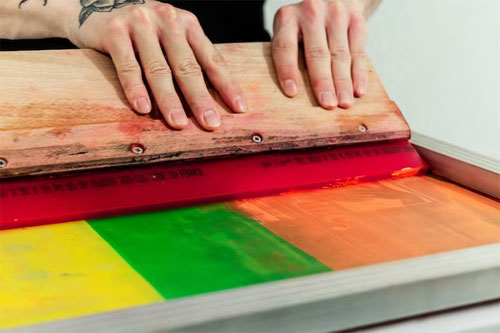
Textile Colouring
Reactive dyes for cotton and other natural fibers are widely utilized in the textile industry for their colouring properties on fabrics such as cotton, wool, silk, and others. They are also used to dye synthetic fibers such as polyester, nylon, and acrylic.
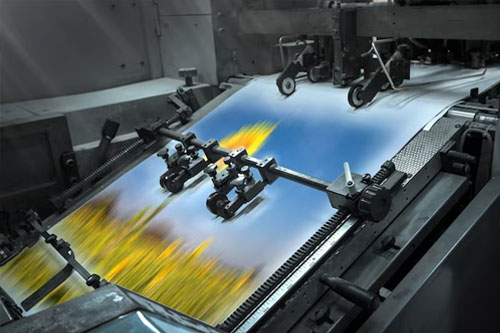
Printing
Reactive dyes can be used to print designs on fabrics using different printing techniques such as screen printing, roller printing, and inkjet printing.
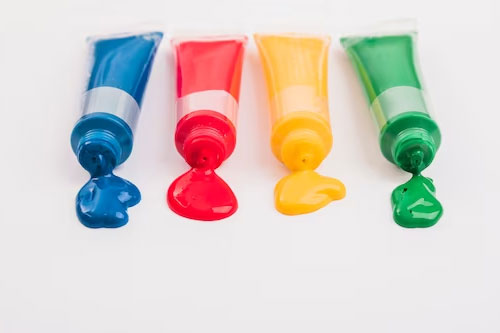
Paper Colouring
Reactive dyes are also used to colour paper and paper products. They are used in the production of paper for books, magazines, and other printed materials.
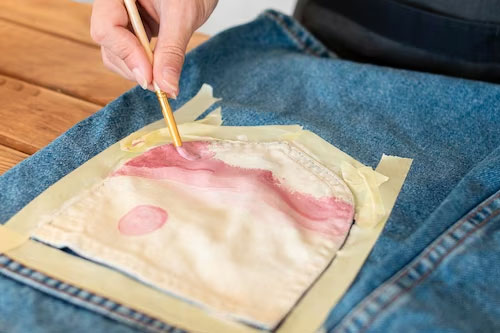
Leather Colouring
Reactive dyes are used to colour leather and leather products such as shoes, bags, and belts.
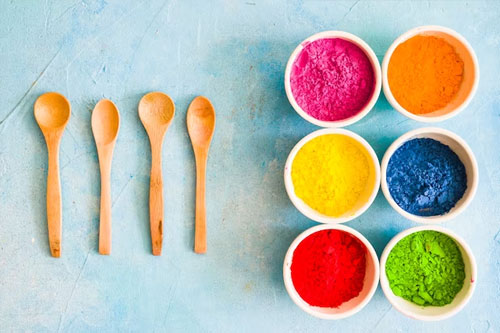
Food Colouring
Some reactive dyes are also used as food colouring agents, although their use in food is highly regulated and limited.
Overall, reactive dyes are versatile and widely used in various industries for their excellent colour fastness and durability.
About Megha International
Looking for a Disperse Dyes Exporter for brazil?
Megha International (ISO 9001: 2008) Established in the year 1995, at Mumbai, is the best Disperse Dyes manufacturers in India that offers an extensive range of dyes in national as well as international markets. Our research and development team carries out constant studies to develop products that reliably set us apart from our competitors and serve our clienteles best. With a remarkable focus on innovation and leveraging new-age expertise, we endeavour to sustain and develop a leading organization on a global scale. The company is among the top disperse dyes manufacturers in Mumbai, and is striving to deliver the finest quality of products to the consumers, while being environmentally sensitive.
Market Area of Megha International
As a prominent Solvent dyes supplier, Megha International is proud to export Solvent dyes in a wide range of countries across the globe. Our reach extends to many countries in Asia, including China, Vietnam, Singapore, Thailand, Malaysia, Korea, Philippines, Japan, and Indonesia.
We also serve clients in the Middle East, such as UAE, Saudi Arabia, Kuwait, Qatar, Iraq, and Iran.
In North Africa, we have clients in Algeria, Morocco, and Tunisia, while in Europe, we offer our services to Russia, the UK, France, Italy, Germany, the Netherlands, Romania, and Poland.
In South America, we serve clients in Brazil, Argentina, Colombia, Peru, and Guatemala, as well as in Central America, including Mexico, Costa Rica, and Honduras.
Finally, we also provide our services to clients in the United States and Chile. No matter where our clients are located, we are committed to delivering high-quality dyes and exceptional customer service.
Frequently Asked Question about Vat Dyes
Solvent dyes are a type of dye that are soluble in organic solvents rather than water. They are commonly used in a variety of applications, including colouring plastics, fibers, and coatings.
Solvent dyes are different from other types of dyes because they are soluble in organic solvents, whereas other types of dyes are typically soluble in water. Solvent dyes also tend to have a higher degree of colour fastness than water-soluble dyes.
Solvent dyes are commonly used to colour plastics, fibers, coatings, and inks. They are also used in the production of colour master batches, which are used to colour plastics.
Solvent dyes are typically added to the polymer resin before it is formed into the final plastic product. This ensures that the colour is evenly distributed throughout the material.
Solvent dyes can be used to colour fabrics, but they are not commonly used for this purpose. This is because they tend to have a lower degree of wash fastness than other types of dyes.
Solvent dyes are different from pigments because they are soluble in organic solvents, whereas pigments are insoluble. This means that solvent dyes can be dissolved in a solvent and applied as a liquid, whereas pigments must be dispersed in a liquid medium.
Solvent dyes are generally considered safe for use in food packaging as long as they are used in accordance with relevant regulations and guidelines. However, it is important to note that some solvent dyes may be toxic if ingested in large quantities.
The choice of solvent dye will depend on a number of factors, including the type of material being coloured, the desired colour, and the processing conditions. It is important to consult with a qualified expert to determine the best solvent dye for a specific application.
Solvent dyes are not typically used in water-based applications, as they are not soluble in water. However, there are some specialized solvent dyes that are designed to be compatible with water-based systems.
Solvent dyes should be stored in a cool, dry place away from direct sunlight. They should also be kept in airtight containers to prevent evaporation and contamination.
